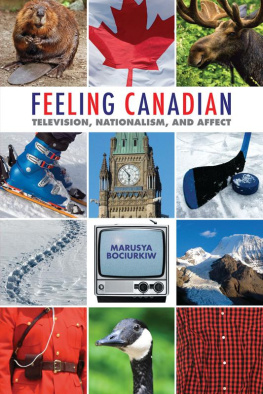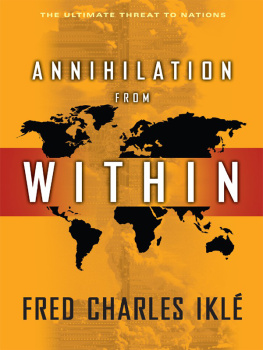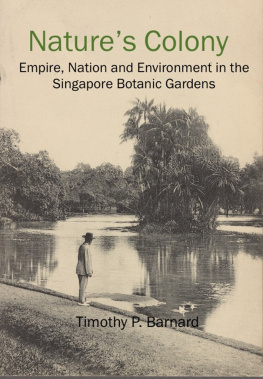The Unreliable Nation
Hostile Nature and Technological Failure in the Cold War
Edward Jones-Imhotep
The MIT Press
Cambridge, Massachusetts
London, England
2017 Massachusetts Institute of Technology
All rights reserved. No part of this book may be reproduced in any form by any electronic or mechanical means (including photocopying, recording, or information storage and retrieval) without permission in writing from the publisher.
Set in StoneSerif by Westchester Book Composition. Printed and bound in the United States of America.
Library of Congress Cataloging-in-Publication Data
Names: Jones-Imhotep, Edward, author.
Title: The unreliable nation : hostile nature and technological failure in the Cold War / Edward Jones-Imhotep.
Description: Cambridge, MA : MIT Press, [2017] | Series: Inside technology | Includes bibliographical references and index.
Identifiers: LCCN 2016054825 | ISBN 9780262036511 (hardcover : alk. paper)
Subjects: LCSH: Technology and stateCanadaHistory20th century. | Telecommunication policyCanadaHistory20th century. | National securityCanadaHistory20th century. | Telecommunication systemsCanada, NorthernReliabilityHistory20th century. | Cold War. | System failures (Engineering)
Classification: LCC T23.A1 J66 2017 | DDC 338.971/0609045dc23
LC record available at https://lccn.loc.gov/2016054825
for my parents
Contents
List of Illustrations
- Early ionograms. In manual ionosondes, observers measured the time delay of radio echoes (represented as a pip on the cathode-ray display or on photographic paper) and plotted their half-heights for given frequencies (upper image). Automatic ionosondes automated this process by directing the cathode-ray traces onto moving film (lower image). Source: Canadian Radio Wave Propagation Committee, Instructions for Observers: Canadian Ionospheric Stations, July 1944, Library and Archives Canada, Record Group 24, file 91472. Government of Canada. Reproduced with the permission of Library and Archives Canada (2016).
- A map showing the locations of ionospheric stations in 1945. Since ionospheric conditions were believed to be constant along a given line of latitude, stations were arranged so that any point of interest on the globe could be connected along a parallel of latitude to the shadow of an ionospheric sounder, allowing predictions for usable radio frequencies at the original point. Three stations were in operation in Canada: one outside Ottawa, one at Churchill, and one (run by the United States) at Clyde River on Baffin Island. By 1947, Canada would take over the Clyde station and would establish two more stations on the east and west coastsTorbay and Prince Rupert, respectively. Source: The Status of the World-Picture of High Frequency Radio Propagation: Report by Working Committee to Consider CX/WP 29, Appendix B (1945), Library and Archives Canada, Record Group 24, volume 4058, file NSS 1078138. Government of Canada. Reproduced with the permission of Library and Archives Canada (2016).
- A 1944 illustration of regions of the ionosphere (D, E, F1, F2), showing cosmic rays (shown as the shower emanating from upper right), and the Aurora Borealis (shown throughout the ionospheric regions). Source: Canadian Radio Wave Propagation Committee, The Application of Ionospheric Measurements (1944), Library and Archives Canada, Record Group 24-C-1, file 91472-1, p. 13. Government of Canada. Reproduced with the permission of Library and Archives Canada (2016).
- Radio absorption zones of the Northern Hemisphere. This map, drawn by members of OIC/6 in November 1943, illustrates the spatial extent of short-wave radio disruptions, which coincides roughly with the appearance of visual aurora. Note its disproportionate extension into Canada. Source: Canadian Radio Wave Propagation Committee, The Application of Ionospheric Measurements (1944), Library and Archives Canada, Record Group 24-C-1, file 91472-1, p. 30. Government of Canada. Reproduced with the permission of Library and Archives Canada (2016).
- The organization of the Ionospheric Research Group of the Canadian Radio Wave Propagation Committee, which brought together principal agencies of the postwar state, including the Armed Service, the Department of Transport, and the Canadian Broadcasting Corporation. Source: L. H. Wylie, Memorandum: Proposed Establishment of an R.W.P. Army Station, October 11, 1945, Library and Archives Canada, Record Group 24, volume 3414, file 4683-3.
- The manual ionosonde produced an A-scan (a), which was displayed on the instruments cathode-ray tube. Technicians measured and plotted the height of the pips to produce a manual ionogram (b). The automatic ionosonde automated the process by blanking out portions of the trace to produce a B-scan (c) and projecting them onto moving film (d). Sources: IGY Instruction Manual, the Ionosphere: Part I, Ionospheric Vertical Soundings, ed. W. J. G. Beynon and G. M. Brown, Annals of the IGY III (1958): 32 (reprinted with permission of Elsevier); Canadian Radio Wave Propagation Committee, Instructions for Observers: Canadian Ionospheric Stations, July 1944, Library and Archives Canada, Record Group 24, file 91472; Government of Canada (reproduced with permission of Library and Archives Canada).
- The ionospheric field station at Prince Rupert, British Columbia. Field stations often resembled modest cabins, and were located in isolated areas (as above) to shield them from radio interference and to protect the confidentiality of their data. Source: Letter from Lt. Robbins to Maj. MacLeod, January 2, 1946, Library and Archives Canada, Record Group 24-C-1, file 91472-1, microfilm reel C-8437.
- The floor plan for the Prince Rupert Ionospheric Station. Stations were generally divided into four rooms: a workshop, an operating room, a darkroom, and an office proper. The introduction of the panoramic ionogram was meant to eliminate possibly unreliable practices in the operating room. Source: Lt. Robbins, Recommended Plan for Ionospheric Station, Prince Rupert, B.C., March 3, 1945, Directorate of Signals Army, Library and Archives Canada, Record Group 24-C-1, file 91472-1, microfilm reel C-8437.
- The LG17 photographic attachment. This technical drawing shows the camera installed as part of the ionosonde equipment at Torbay, Newfoundland. The camera was actuated by a foot pedal or set to take pictures automatically at intervals from two seconds to one minute, recording the information on a continuous roll of 35-millimeter film. Source: Assembly Camera for LG17, Library and Archives Canada/Department of Communication fonds/e008407061. Government of Canada. Reproduced with the permission of Library and Archives Canada (2016).
- The first ionograms produced in February 1949 at Baker Lake, Northwest Territories. Produced by E. E. Stevens, these records were the result of an arduous calibration program designed to ensure their value. Source: Letter from E. E. Stevens to W. B. Smith, February 15, 1949, Library and Archives Canada, Record Group 12, volume 1641, file 6802133. Government of Canada. Reproduced with the permission of Library and Archives Canada (2016).
- A map of radio transmissions into the Yukon. The arrows indicate the source of the transmissions entering the Territory; their breadth indicates reception quality. Note the two small arrows in the lower right representing Canadian broadcasts. Source: F. H. Collins, Radio in the Yukon Territory: A brief presented to the Royal Commission on Broadcasting, A Brief Presented to the Royal Commission on Broadcasting, April 1956, Library and Archives Canada, Record Group 41, volume 127, file 5, part 2. Government of Canada. Reproduced with the permission of Library and Archives Canada (2016).








